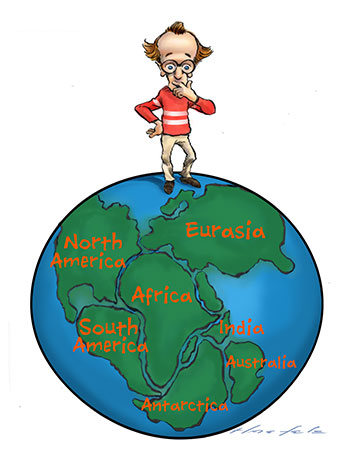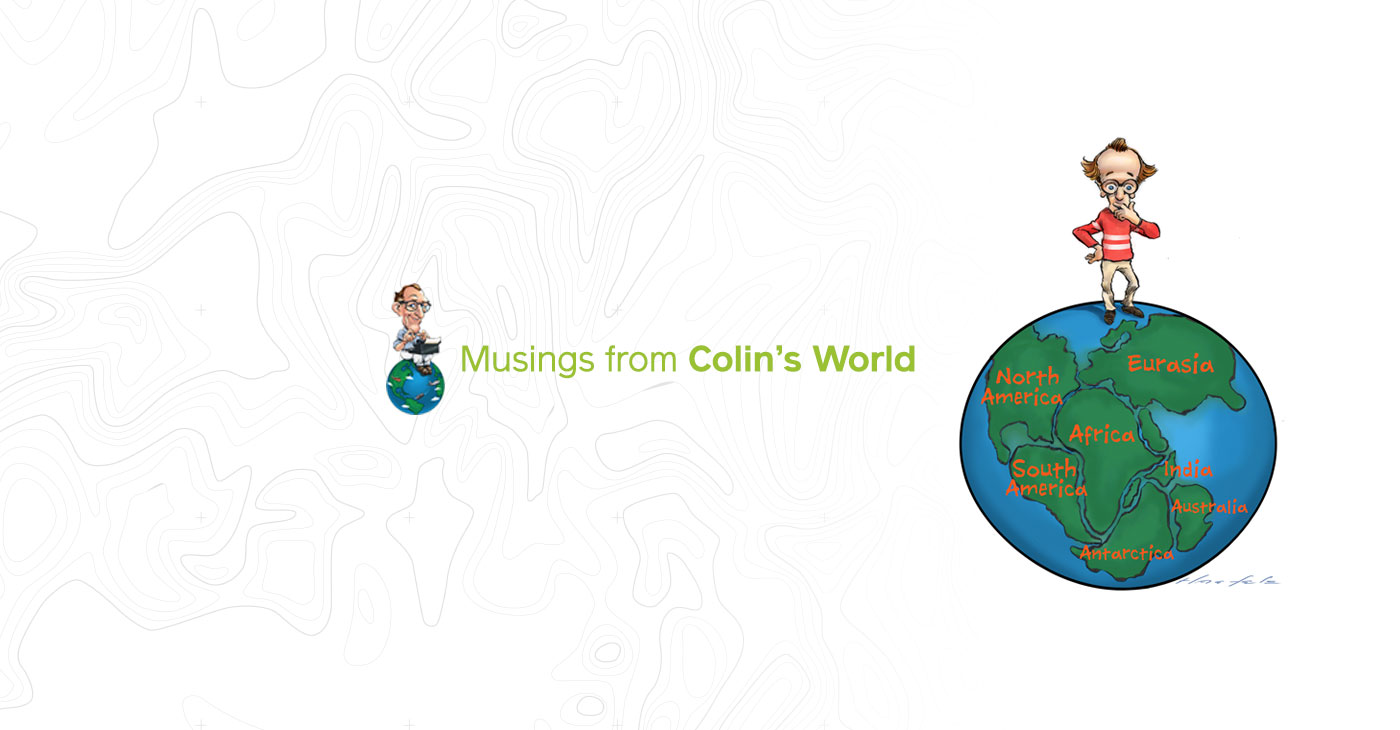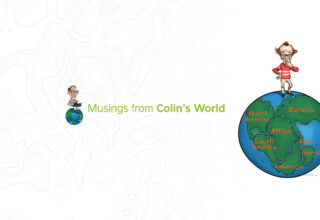When I was first introduced to geography in grade school it seemed pretty dry. We had a brick of a hardcover textbook, with lots of text, some grainy black-and-white photos, and a few maps, graphs and charts. It was not nearly as glamorous as many other things in my world – TV for example – and I wasn’t very excited by it. The word “geography” seemed clunky and dull, like my textbook.
Today I take responsibility for squandering my educational opportunities. But that’s the way it was. Geography didn’t turn me on much in those days. As with so many things, it was travel that awakened in me a lusty fascination with geography.
Travel presents the real world with all its color, sound, smells, tastes and tactile sensations from the feeling of drawing the atmosphere of a place deeply into your lungs; to the feeling of your fingertips on an ancient stone wall. It’s a multi-sensory experience, an ongoing presentation all around. You can turn in different directions at any moment and see different movies, different scenes in the ongoing grand drama of life.
 Though I didn’t think I was interested in “geography,” I was certainly interested in what it was made up of. In movies I hungrily devoured the images and sensations of the exotic destinations portrayed. I traveled to them vicariously. In Tarzan movies I saw the jungle. James Bond movies showed many alluring travel destinations, from tropical island paradises to great cities. Documentary movies showed the nature and wildlife of distant places, such as Alaska, Africa and Australia.
Though I didn’t think I was interested in “geography,” I was certainly interested in what it was made up of. In movies I hungrily devoured the images and sensations of the exotic destinations portrayed. I traveled to them vicariously. In Tarzan movies I saw the jungle. James Bond movies showed many alluring travel destinations, from tropical island paradises to great cities. Documentary movies showed the nature and wildlife of distant places, such as Alaska, Africa and Australia.
When I was able to travel to some of the most amazing places, they ignited a hunger to know more about the history, art, music, politics, economics, biology, anthropology, geology and geography associated with them.
Most of what I know I have learned through travel. After I had seen some of those magical places, I wished I could go back to those classrooms, dig into the old textbooks again, knowing what I know now, and to pepper my teachers with questions.
I can’t go back in time that way, but on tours I’ve had the benefit of great teachers acting as guides who use the lenses of history and the arts and sciences to help you see with your mind’s eye what lies behind what you can see physically in front of you.
All of those subjects combine in the real world. They cannot be separated. The Oxford dictionary defines geography as “the study of the physical features of the earth and its atmosphere, and of human activity as it affects and is affected by these, including the distribution of populations and resources, land use, and industries.” That incorporates many aspects of a place, and practically all the other disciplines. In travel each of those fields of study bleed into the others. Maybe part of what made them become so appealing was to see them all connected in an exciting travel destination.
Travel has led me through various disciplines, as related to each destination. One that has become increasingly fascinating in recent times is geology, which provides me with a new, expanded view of existence and the long history of the world.
Geography and geology are like siblings. Both words are derived from the Greek word “geo,” which means earth. “Geography” means earth description, and “geology” means earth study. Through the study of rocks and layers of the earth, geologists have been able to provide a glimpse of the nearly incomprehensible time scales in the life of the earth.
Scientists believe our planet has been in existence for 4.5 billion years. To give an idea how long that is, a guide at the Grand Canyon told me that if you condensed the lifespan of the earth into one year, the emergence of human beings would not occur until 6:59 p.m. the last day of the year.
Geologists say the Colorado River began cutting its present-day path 20 million years ago. Today the canyon is an average of 10 miles from rim to rim, as much as 18 miles wide in some places, and a mile deep.
As the river cut its path, wind and water erosion made it wider and wider, producing the giant chasm we see today. Geologists can read the layers of earth exposed by the erosion going back 2 billion years. It’s an inconceivable number, but the canyon presents a diagram for visualizing it. And it is awesome to take it in, an experience beyond thought.
Through traveling I came across some strange facts that opened the door to the theories of plate tectonics, which provide another way of understanding the history of the earth.
At one point I became aware that the east coast of South America seems to fit like a jigsaw puzzle piece into the west coast of Africa. I didn’t know what to make of that observation, but then I learned about the concept of continental drift, based on the idea that the continents move around on the surface of the earth. Though the earth seems solid to us, the continents actually move. But the movement is so slow that we can’t observe it in a lifetime. The idea that a continent moves and inch or two in a year doesn’t seem very significant. But when you consider the lifespan of the earth, there is enough time for those continents to move a great deal.
After travel had given me a sense that Spain seemed to have as much of an affinity with Africa as with the rest of Europe, I discovered that the Iberian Peninsula, had once been part of the African landmass. It collided with the Eurasian landmass, and the collision pushed up the Pyrenees Mountains between Spain and France.
While traveling in Alaska I learned that it had drifted around separately, sometimes connected to the Eurasian landmass and sometimes to the North American landmass. At one point it was at the North Pole. Today’s Alaska is a conglomerate of many islands pushed together. Somehow that knowledge enhanced my appreciation of Alaska, though I can’t really say why.
I came upon a map visualizing all of the present-day continents grouped together into a single supercontinent at some time in the distant past. It was called Pangea. I thought I had found a great insight into what the world looked like at the beginning. Then recently on an expedition I heard a geologist explain that Pangea was not “the beginning,” but only one stage along the way. Before that were other groupings.
As the science has advanced, more supercontinents have taken their places in the theories, including Gondwana and Pannotia, and before that Nuna, Rodinia and Ur.
Some would say, “Why does this matter? It’s so far beyond human experience?” But I guess it matters to me because it makes the earth even more awe inspiring. And it gives me more humility about my place within it.
And once again, it all comes back to travel, and what Mark Twain says “is fatal to prejudice, bigotry, and narrow-mindedness.” And in the end, that may be an even better reason to like travel than the fact that it is so much fun.
Your humble reporter,
Colin Treadwell


Hi Colin – this from your humble reader and occasional responder:
This article of yours should be the Introduction to any Geography or Geology textbook.
And, your Mark Twain reference is so thought-provoking, it should be the title.
– Rick P.